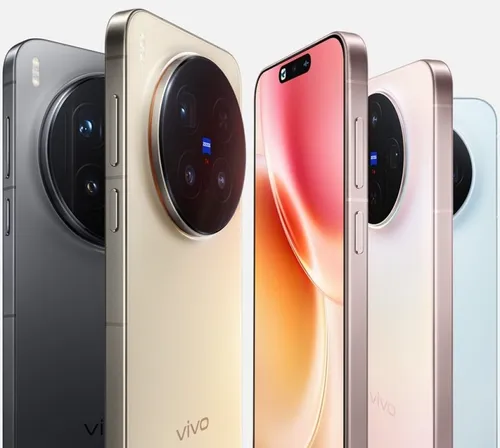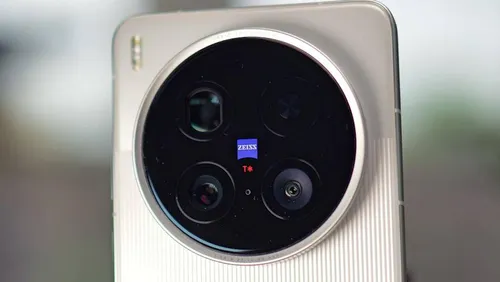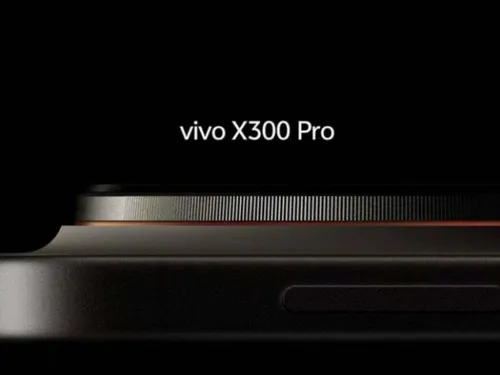It’s not just another launch. This one feels like vivo quietly flexing its maturity. The brand that once played in the shadows of others is now shaping its own voice in the premium market.
Design and Display: Familiar Form, Sharper Details
At first glance, the X300 and X300 Pro don’t try too hard. They’re clean, minimal, and pleasantly balanced — something that’s becoming a rare quality in modern flagships.
The smaller X300 carries a 6.31-inch LTPO display, while the Pro stretches to 6.82 inches. Both are 120Hz panels using 8T LTPO tech, which helps them switch refresh rates more efficiently depending on what’s on screen. It’s a subtle but noticeable difference when you’re scrolling or watching HDR content.
There’s also an ultrasonic fingerprint reader under the display — a touch that instantly makes it feel like a premium device, not just another high-spec Android phone.
You can tell vivo didn’t design this phone to shock. It’s the kind of design that grows on you the more you use it.
Camera System: vivo’s Signature Advantage
Photography has long been vivo’s comfort zone, and the X300 series doesn’t stray from that. The vivo X300 packs a 200MP Samsung HPB sensor, accompanied by a 50MP Sony LYT-602 telephoto lens and a 50MP ultrawide. The X300 Pro, on the other hand, flips the focus with a 200MP telephoto camera, backed by a 50MP Sony LYT-828 main sensor and the same ultrawide setup.
Selfies are handled by a 50MP Samsung JN1, which might sound excessive, but vivo’s tuning keeps it natural and sharp without that over-processed glow many rivals push.

The results? A flagship camera system that feels thoughtful rather than experimental. In a market where AI filters and artificial contrast dominate, vivo’s color science feels refreshingly honest.
Battery, Charging, and a Small European Compromise
Here’s the one catch: the European models come with slightly smaller batteries. Certification limits forced vivo to trim capacity to 5,360mAh for the X300 and 5,440mAh for the X300 Pro.
That said, both keep 90W wired and 40W wireless charging, so you’ll rarely feel short on power. In real use, you’ll still go from 0 to 100% in under 40 minutes — not bad considering the screen size and chipset.
I’d call it a smart trade-off. Most people won’t even notice the missing 500mAh unless they’re tracking it on paper.
Software and Performance: A Polished Global Debut for OriginOS

The company also promises five years of OS updates and seven years of security patches, signaling a long-term vision that wasn’t always part of vivo’s playbook.
You can sense a level of confidence here — the kind that only comes from a brand that’s learned from its global audience.
Colors, Pricing, and Launch Perks

vivo’s Moment of Clarity
The X300 lineup isn’t flashy. It doesn’t shout its specs or drown you in buzzwords. Instead, it just works — and it does so elegantly.
vivo may still be earning its place among Europe’s biggest names, but the X300 and X300 Pro make one thing clear: the brand has found its footing. It’s confident, precise, and quietly ambitious. And that, perhaps, is what makes this launch stand out the most.
Key Takeaways
- vivo X300 and X300 Pro officially launch in Europe with Dimensity 9500 and refined designs.
- Both feature 120Hz 8T LTPO displays and ultrasonic fingerprint sensors.
- 200MP cameras headline vivo’s photography-focused lineup.
- Slightly smaller European batteries, but still 90W wired / 40W wireless charging.
- OriginOS 6 (Android 16) debuts globally with long-term update support.
